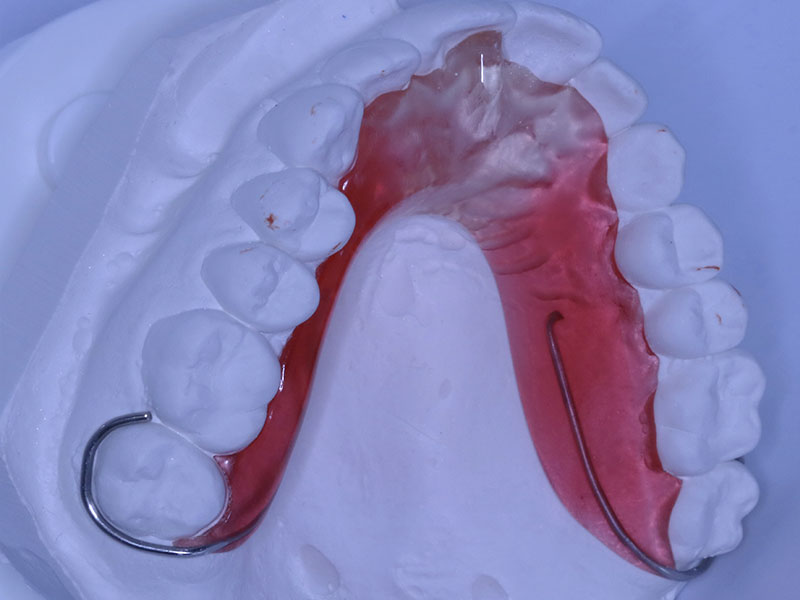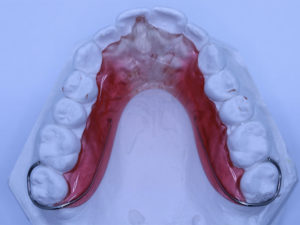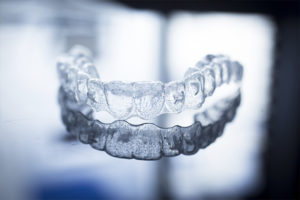Approximately 70% of the population has some form of “bite problem”. Many people experience symptoms (pain, limited function, joint noises) that are often referred to as “TMD” or Temporo-Mandibular Disorders. More commonly people have bite problems that do not produce symptoms but rather adaptations. Many of these adaptations are painless and thus often are happening un-noticed. These adaptations include loose teeth, recession, bone loss, enlarged muscles, joint problems, premature tooth wear, cracks and fractured teeth.
See this article for more signs of these adaptations or “occlusal disease”.
These “bite problems” can be characterized as “above the nose” or “below the nose” problems. Above the nose problems refer to approx 10% where the issue is brain driven muscle activity that leads to destructive grinding and clenching. The rest are “below the nose” problems and are caused by a misfit between where the jaw joints and muscles want to function and where the teeth fit together.
Typically the misfit will occur between either the front teeth or the back teeth as the muscles bring the jaws and thus teeth together. If the problem happens at the front we refer to this as a “constricted chewing pattern” and it is often associated with discomfort while chewing hard or chewy foods, broken, chipped or worn front teeth and TMJ problems.
If the problem happens at the back, we refer to this as “occlusal dysfunction” and it is often associated with difficulty chewing hard foods, feeling like having more than one bite or teeth not fitting together without having to squeeze then, and/or abnormal wear on back teeth.
The brain is programmed to make the most number of teeth touch as part of being an efficient chewing machine, so when there is a misfit this leads to increased friction and forces where things don’t fit. If the teeth don’t fit in this bite position so the brain compensates by creating “engrams” or muscle memory programs (like the ones that operate when you pedal a bike, repetitive muscle movements that you don’t have to think about).
Thus to correct “bite problems” it is essential to know where the jaw wants to function relative to the teeth. To learn this we must prevent the teeth from deflecting the jaw/muscles from where they want to function, thus allowing the muscles to relax and the joint to finds its natural, healthy position. The best way to do this is using a Kois Deprogrammer.
The Kois Deprogrammer (KD) is an appliance that is worn on the upper jaw, and has a small platform that contacts a lower incisor to hold the bite open approx 1-1.5mm between the back teeth. It is worn 24/7 (except when eating and cleaning teeth) for 1-4 weeks. It is worn until a consistent first point of contact (FPC) is found during first closure of jaws after removing the KD.
For a more complete discussion of the Kois Deprogrammer read this article.
Once a consistent FPC has been found, the patient will return and a record will be taken to capture the jaw “natural” position. This record will be used to mount the models of the patient’s teeth on an articulator or jaw simulator.
The reported FPC will be confirmed and then duplicated on the models. Then we are able to confirm a diagnosis of the patient’s bite problem and start to plan possible solutions: if the FPC is on a back tooth, the diagnosis is Occlusal Dysfunction; and if the FPC is on a front tooth, the diagnosis is Constricted Chewing Pattern.
The goal of any treatment solution is to create an efficient and harmonious chewing system. The first part of this is a healthy functional position for the jaw joints. The second part is having a good “home” with precise, even, simultaneous posterior contacts on teeth from canines to 2nd molars. The final part is having appropriate guidance on anterior teeth to allow for efficient chewing without posterior teeth colliding.
If you suffer from Deprogrammers book an appointment online or call The Marshall Dental Clinic at (604) 733 9311 and talk to us about how we can help you.











